




Next: VARIABLE EPSILON
Up: R. Clapp: Dealing with
Previous: Introduction
In Clapp (2001a), I outlined a procedure
for selecting points for back projection.
The goal was to find points with high dip coherence
and semblance at a minimum distance from each other.
This methodology can run into problems
for events whose moveout doesn't correspond
to primary events or whose moveout is not adequately
defined by calculating vertical semblance. For example,
the common reflection point (CRP) gathers in Figure 1 shows every fifth
gather along the left edge of a salt body. Note
the coherent but ``hockey stick'' like shapes within
the `A' oval. These can be caused by small velocity
errors Biondi and Symes (2002) but measuring
just vertical moveout would indicate much larger errors.
Clapp (2002)
shows one way to address the latter concern.
gathers
Figure 1 Every 5th gather to the left edge
of a salt body. Note the coherent, ``hockey stick'' behavior
within `A'.





Simply limiting the range of acceptable moveouts that we search
isn't a sufficient solution because the maximum often will
be at the extreme scan range.
A simple methodology to minimize the effect of unreasonable
moveouts is to scan over a large range of acceptable moveouts
and only accept points whose maximum fall within a smaller range
(see Figure 2).
With this methodology, spurious moveouts can be identified and
ignored. When dealing with internal multiples or events whose moveout
is close to acceptable, failure can still result.
limited
Figure 2 The top figure shows an example of a good
point. The maximum is reasonable and within the scanning region
indicated by the solid vertical lines.
The second plot shows the problematic situation. The moveout is unreasonable
and its maximum is outside the scanning range.
We can avoid using the unrealistic moveout by scanning over moveouts
between the solid lines but only selecting points whose maximum
is within the dashed lines, bottom panel.
|
| 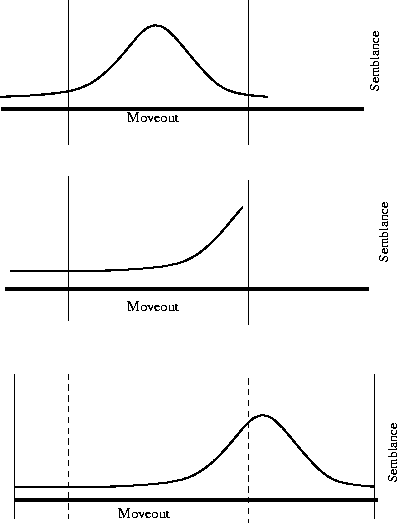 |

To show the benefits of this methodology, I applied it to a
complex 2-D dataset.
Figure 3 shows an initial velocity
model and migrated image of a 2-D line from a 3-D dataset
donated by Total Fina Elf.
Figure 4 shows the updated velocity model and
migrated image without limiting the scan range. Note the
extreme velocity along the edge of the salt.
The resulting image is less coherent than the
initial image, especially in the ovals indicated
by `A', `B', and `C'. Figure 5
shows the result of limiting the range of acceptable moveouts.
Note how the velocity along the edge is more reasonable.
We see a strong salt bottom reflection at `A', better
definition of the valley at `B', and more coherent
events leading up to the salt edge at `C'.
combo.vel0
Figure 3 The starting model and migration of
a 2-D line from a 3-D North Sea dataset.
The top-left panel shows the velocity
model (white indicates large velocities) and the top-right panel shows the migrated
image using this velocity.
The bottom panel shows a zoomed area around the salt body.
Note the salt
bottom,`A'; the valley structure at `B'; and over the salt under-hang at `C'.
![[*]](http://sepwww.stanford.edu/latex2html/movie.gif)




 combo.vel1.bad
combo.vel1.bad
Figure 4 Data after one non-linear iteration.
The top-left panel shows the velocity
model and the top-right panel shows the migrated
image using this velocity.
The bottom panel shows a zoomed area around the salt body.
Note the salt
bottom,`A'; the valley structure at `B'; and under the salt over-hang at `C'.
![[*]](http://sepwww.stanford.edu/latex2html/movie.gif)




 combo.vel1.l2
combo.vel1.l2
Figure 5 Data after one non-linear iteration with limited semblance search window.
The top-left panel shows the velocity
model and the top-right panel shows the migrated
image using this velocity.
The bottom panel shows a zoomed area around the salt body.
Note the salt
bottom,`A'; the valley structure at `B'; and under the salt over-hang at `C'.
Note the improvements compared to Figure 4.
![[*]](http://sepwww.stanford.edu/latex2html/movie.gif)










Next: VARIABLE EPSILON
Up: R. Clapp: Dealing with
Previous: Introduction
Stanford Exploration Project
11/11/2002
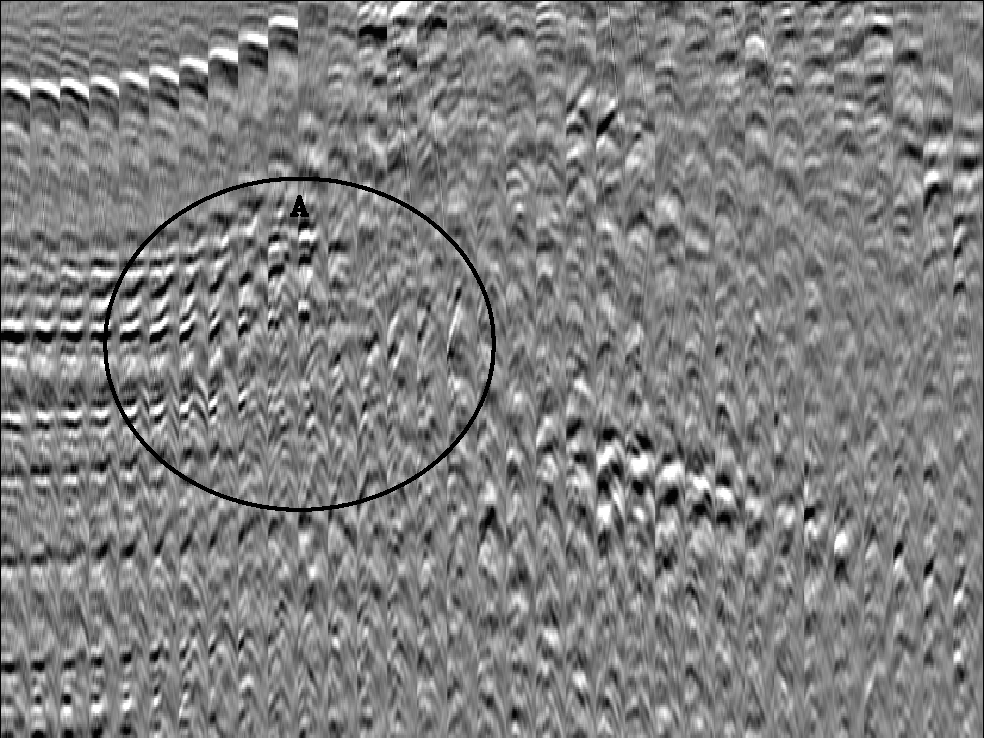


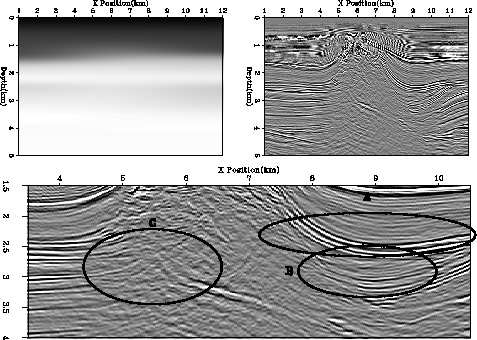
![[*]](http://sepwww.stanford.edu/latex2html/movie.gif)
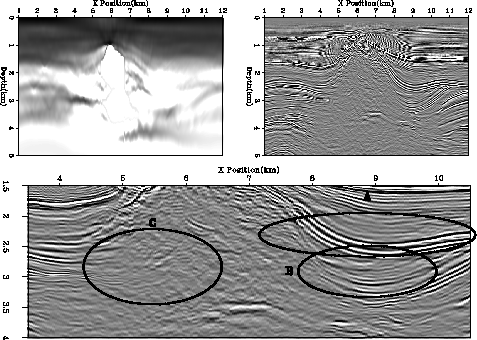
![[*]](http://sepwww.stanford.edu/latex2html/movie.gif)
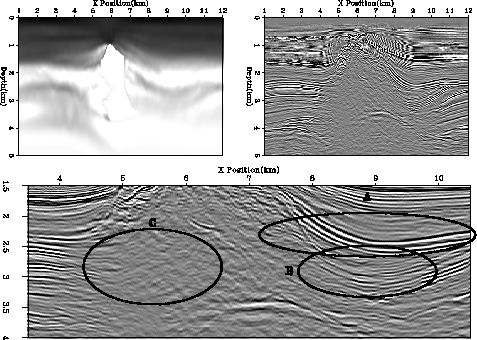
![[*]](http://sepwww.stanford.edu/latex2html/movie.gif)